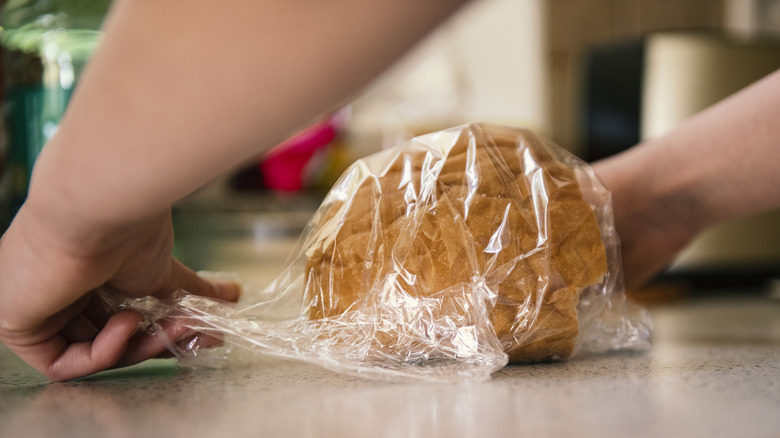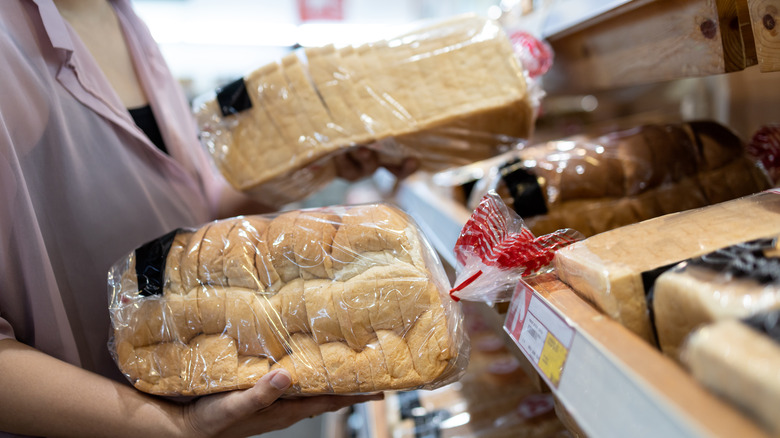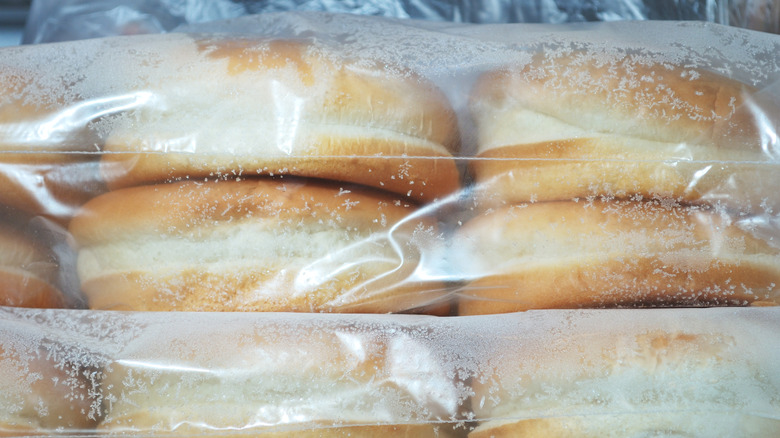Is It Safe To Eat Expired Bread? What We Know
While some food items in our kitchen have a shelf life of only a few days, other items can seemingly last a lifetime (looking at you, canned goods). Unfortunately, bread is not one of these forever items. So just how long can we hold on to a loaf of bread before it becomes a health hazard?
Generally speaking, bread that's kept in your pantry can thrive for approximately three days to maybe a week, according to experts at Healthline. After this time, you may start to notice the presence of unsightly mold spots. Breads that fall on the longer-lasting side of this spectrum often include store-bought bread. Many are made with preservatives such as potassium sorbate, sorbic acid, and more. Breads that are preservative-free lean more towards the three-day side of the shelf-life spectrum.
Three days isn't much time to get through a whole loaf of bread — but nobody wants to waste food. So is it still safe to eat bread after the expiration date has passed?
Best if used by and expired are not the same thing
First, let's clarify the difference between expired and the kinds of labels you might see on your bread packaging, such as "best-if-used-by" or "sell-by" dates. The U.S. Department of Agriculture Food Safety and Inspection Service notes that these dates do not mean the product is no longer safe for consumption. Rather, they are indicative of a product's peak quality — or simply used for inventory purposes. The agency outlines that while foods can be eaten beyond their best-if-used-by or sell-by date, they should not be consumed once they display signs of spoilage. For bread, this can mean mold growth.
One of the key elements that mold needs to thrive is moisture. Couple this with time and warmer temperatures, and a loaf of bread can make a cozy home for illness-causing mold. For example, gluten-free bread is often made with fewer preservatives and tends to be more moist, increasing the chances for mold growth. While not all mold is hazardous, a loaf of bread that's become stale, moldy, or has an unusual taste or odor should be discarded.
How to get the most out of your bread
Thankfully, there are tactics we can use to help keep our bread fresh for a longer stretch of time. One of these tactics is to opt for breads that will naturally last longer. Chef Jennifer Hill Booker in Atlanta told Insider that this includes breads with more fat, such as challah, which acts as its own preservative. Similarly, breads made with almond flour will also naturally contain more fat. This will extend their shelf life beyond those made with all-purpose flour, for example.
How we store our bread can also make a difference. Utilize a breadbox, sealable plastic bag, or glass-top container and try and keep your bread in a cool environment. Essentially, anywhere but the top of the fridge, Hill cautions, stating, "It's so warm up there that whatever moisture is trapped in the container or the bag for the bread will start to help it mold." Finally, consider storing any uneaten portions of your loaf in the freezer. This can keep leaner breads safe to eat for up to three months — and more dense breads for as long as half a year.



